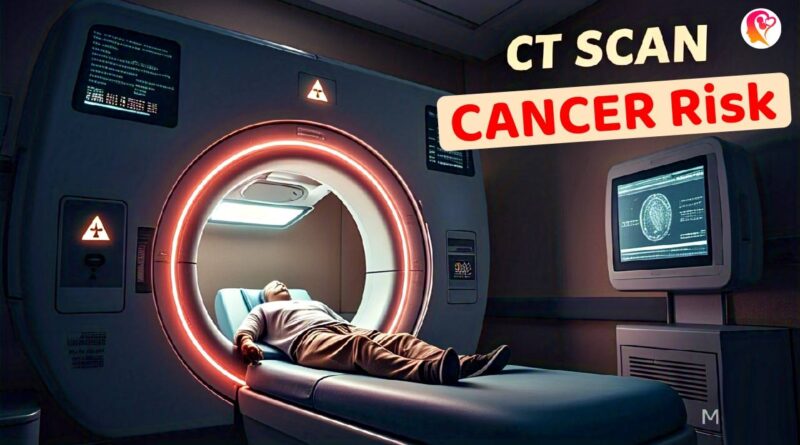CT Scans May Lead To Cancer: The Surprising Connection
The Hidden Truth Behind CT Scans: Are They Safe? 🤔
Imagine walking into a hospital for a routine scan, seeking answers, clarity, and peace of mind. But what if that very scan, designed to protect your health, carries a hidden risk? 😟
Recent studies have unveiled a startling revelation: CT scans, while invaluable in modern diagnostics, may be linked to an estimated 103,000 new cancer cases annually in the U.S. alone! 😱 This alarming statistic prompts a crucial question: Are CT scans safe? Let’s delve deeper into the world of CT scans, their benefits, risks, and safer alternatives.
📈 The Astonishing Rise of CT Scans: A Necessary Evil?
Since their inception, CT scans have revolutionized medical imaging, providing detailed cross-sectional views of the body like never before. This technology has become a cornerstone of modern medicine, aiding in the swift and accurate diagnosis of a wide range of conditions.
📊 The Numbers Speak Volumes:
- 1980: Approximately 3 million CT scans were performed in the U.S.
- 2023: This number has skyrocketed to over 93 million! 🚀
This exponential surge highlights our increasing reliance on CT scans for quick and precise diagnoses. From identifying internal injuries after accidents to detecting early signs of disease, their utility is undeniable. However, this widespread use also warrants a closer examination of the potential downsides.
⚠️ Unveiling the Risks: The Shadow of Radiation
CT scans utilize ionizing radiation to create those detailed images. While this radiation allows doctors to see inside the body with remarkable clarity, it also carries a potential risk. Exposure to ionizing radiation, especially in high doses or through repeated scans, can damage DNA and potentially lead to cancer over time[^2].
🧬 How Radiation Affects Your Body:
This risk is particularly concerning for children. Their rapidly growing cells are more susceptible to the harmful effects of radiation. Studies suggest that 1 to 2 children per 10,000 undergoing a CT scan may develop blood cancers like leukemia due to radiation exposure[^3]. This underscores the critical need for careful consideration when CT scans are recommended for younger patients.
🌍 Global Perspectives: A Tale of Two Continents
Interestingly, the utilization of CT scans varies significantly across the globe. In the U.S., the frequency of CT scans is notably higher compared to countries like the UK, where stricter guidelines and a more cautious approach often limit unnecessary scans[^4].
🗺️ CT Scan Usage Around the World:
This stark contrast highlights the importance of evaluating the necessity of each CT scan and considering international best practices to ensure responsible utilization.
✨ Exploring Safer Alternatives and Innovative Solutions
Fortunately, medical science is continuously advancing, offering viable alternatives that minimize or eliminate radiation exposure.
💡 Radiation-Free Imaging Options:
- MRI (Magnetic Resonance Imaging): Uses strong magnetic fields and radio waves to create detailed images without radiation[^5].
- Ultrasound: Employs sound waves to produce real-time images of internal organs and tissues, also without radiation[^6].
Furthermore, advancements in CT technology itself are making strides in reducing radiation exposure. The “As Low As Reasonably Achievable” (ALARA) principle guides medical professionals to meticulously minimize the radiation dose while still obtaining diagnostically valuable images[^7]. This involves tailoring scanning parameters to the individual patient and the specific clinical need.
🤝 Empowering Patients and Practitioners: Informed Decision-Making
Ultimately, navigating the landscape of medical imaging requires a collaborative effort between patients and healthcare providers. Knowledge is power, and as patients, we must be empowered to engage in informed discussions about our imaging options.
❓ Key Questions to Ask Your Doctor:
- 🩺 Is this CT scan truly essential for my diagnosis?
- ❓ Are there alternative imaging methods available that do not involve radiation?
- 📝 How will the results of this CT scan influence my treatment plan?
By asking these crucial questions and actively participating in the decision-making process, we can ensure that CT scans are used judiciously and responsibly. Healthcare professionals, in turn, must prioritize the ALARA principle and consider safer alternatives whenever clinically appropriate.
CT scans remain an indispensable tool in modern medicine, providing invaluable insights into the human body. By understanding both their remarkable benefits and the potential risks associated with radiation exposure, and by advocating for their judicious and informed use, we can harness their power safely and effectively, safeguarding our health in the long run.
Stay informed. Stay empowered. 💪
❓ Frequently Asked Questions (FAQ) About CT Scans and Radiation Risk
1. What are the main risks associated with CT scans?
The primary risk associated with CT scans is exposure to ionizing radiation, which, at high doses or with repeated exposure, can damage DNA and potentially increase the risk of developing cancer over time.
2. Are some people more at risk from CT scan radiation than others?
Yes, children are generally considered more vulnerable to the effects of CT scan radiation due to their rapidly dividing cells. The risk is also cumulative, meaning that individuals who have had multiple CT scans over their lifetime may have a slightly higher risk.
3. Are there alternatives to CT scans that don’t use radiation?
Yes, MRI (Magnetic Resonance Imaging) and ultrasound are two common medical imaging techniques that do not use ionizing radiation. They can be effective alternatives in certain diagnostic situations.
4. How can I minimize my risk from CT scans?
The best way to minimize your risk is to have an informed discussion with your doctor about the necessity of the scan and whether there are any suitable alternatives. Ask questions about the radiation dose and ensure the facility follows the ALARA principle. Keep a record of your past scans to inform your doctor about your cumulative radiation exposure.
5. Should I be worried about getting cancer from a single CT scan?
The risk of developing cancer from a single, appropriately performed CT scan is generally considered low. However, the risk is not zero and increases with higher doses and repeated scans. It’s essential to weigh the benefits of the scan against the potential risks in consultation with your healthcare provider.
6. What is the ALARA principle in the context of CT scans?
The ALARA (As Low As Reasonably Achievable) principle is a guiding principle in radiology that emphasizes using the lowest possible radiation dose necessary to obtain a diagnostic image. This involves adjusting scanning parameters based on the patient’s size and the specific clinical question to minimize radiation exposure.




